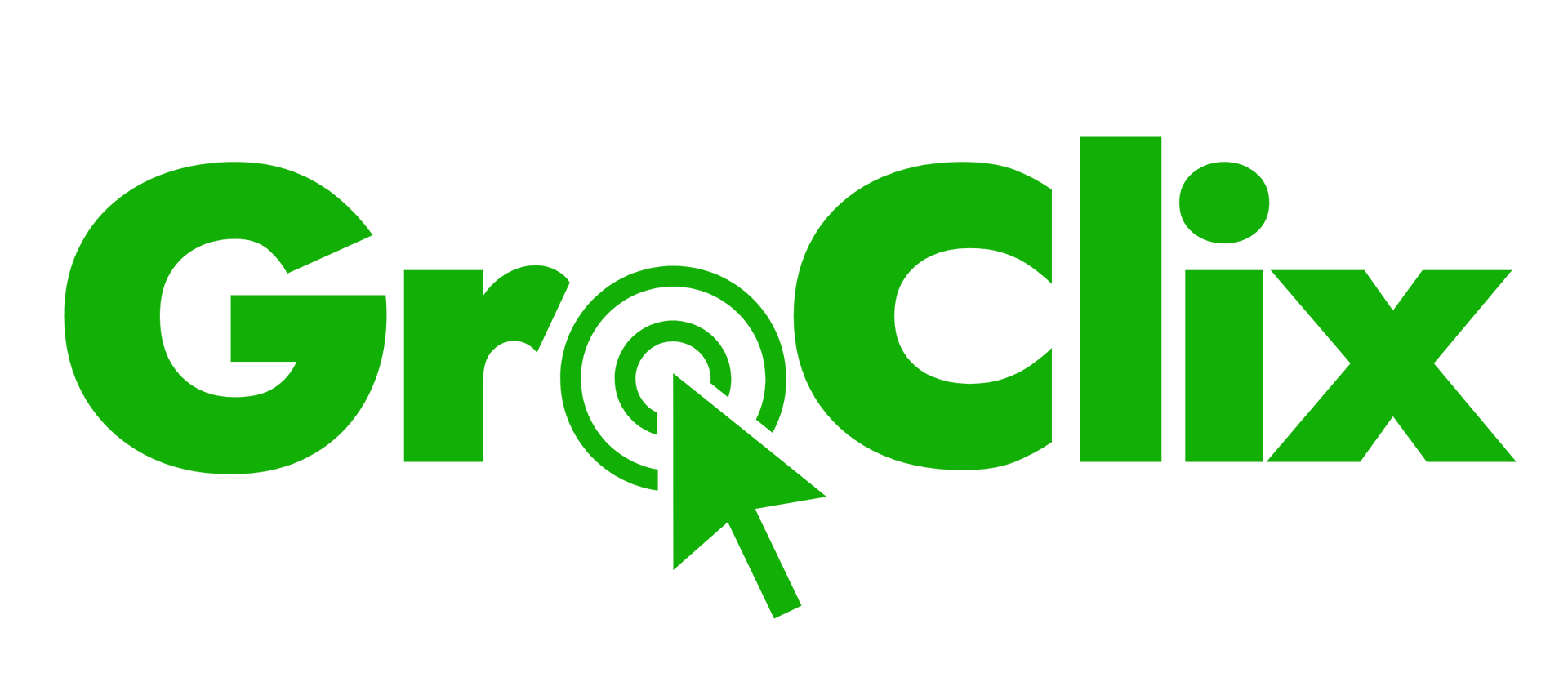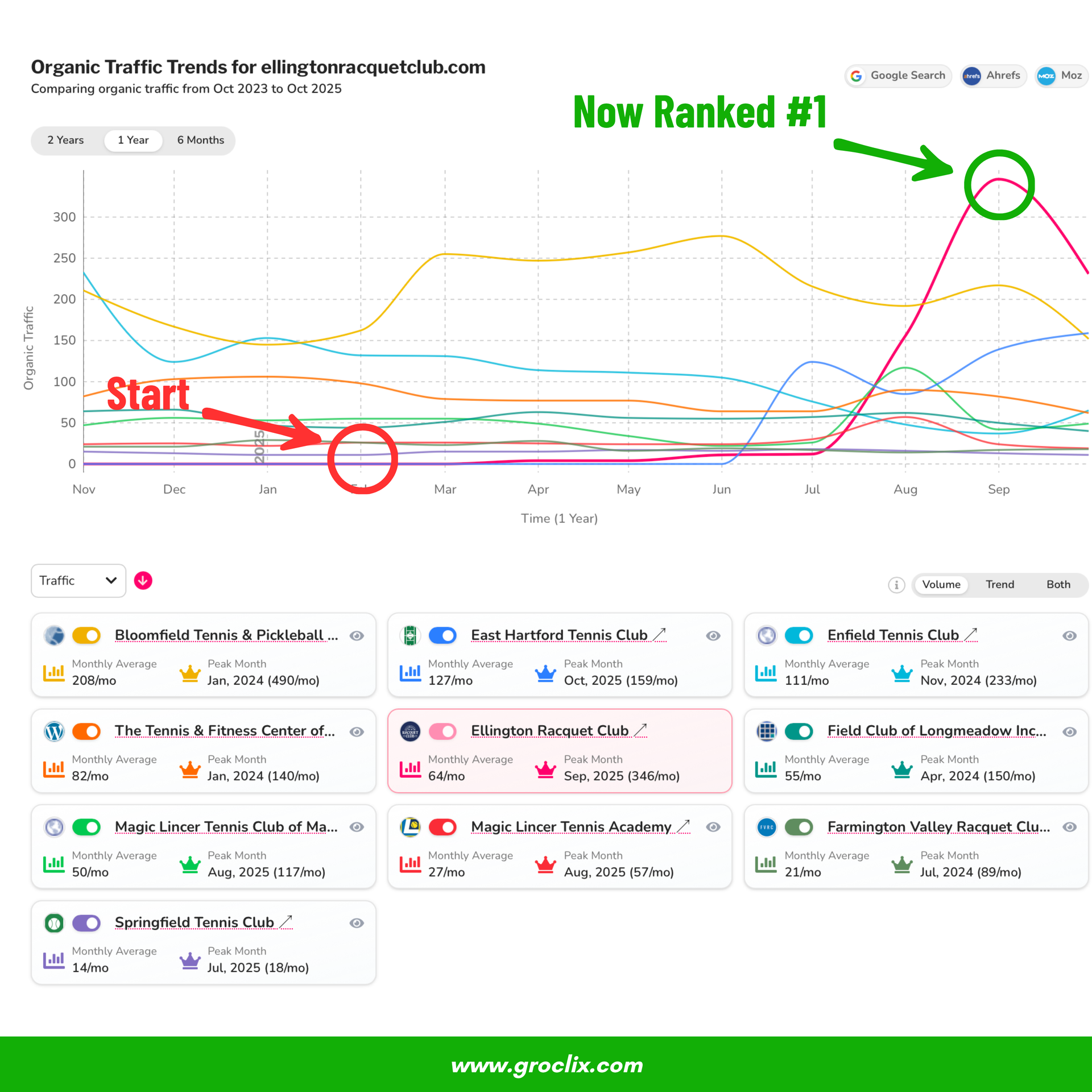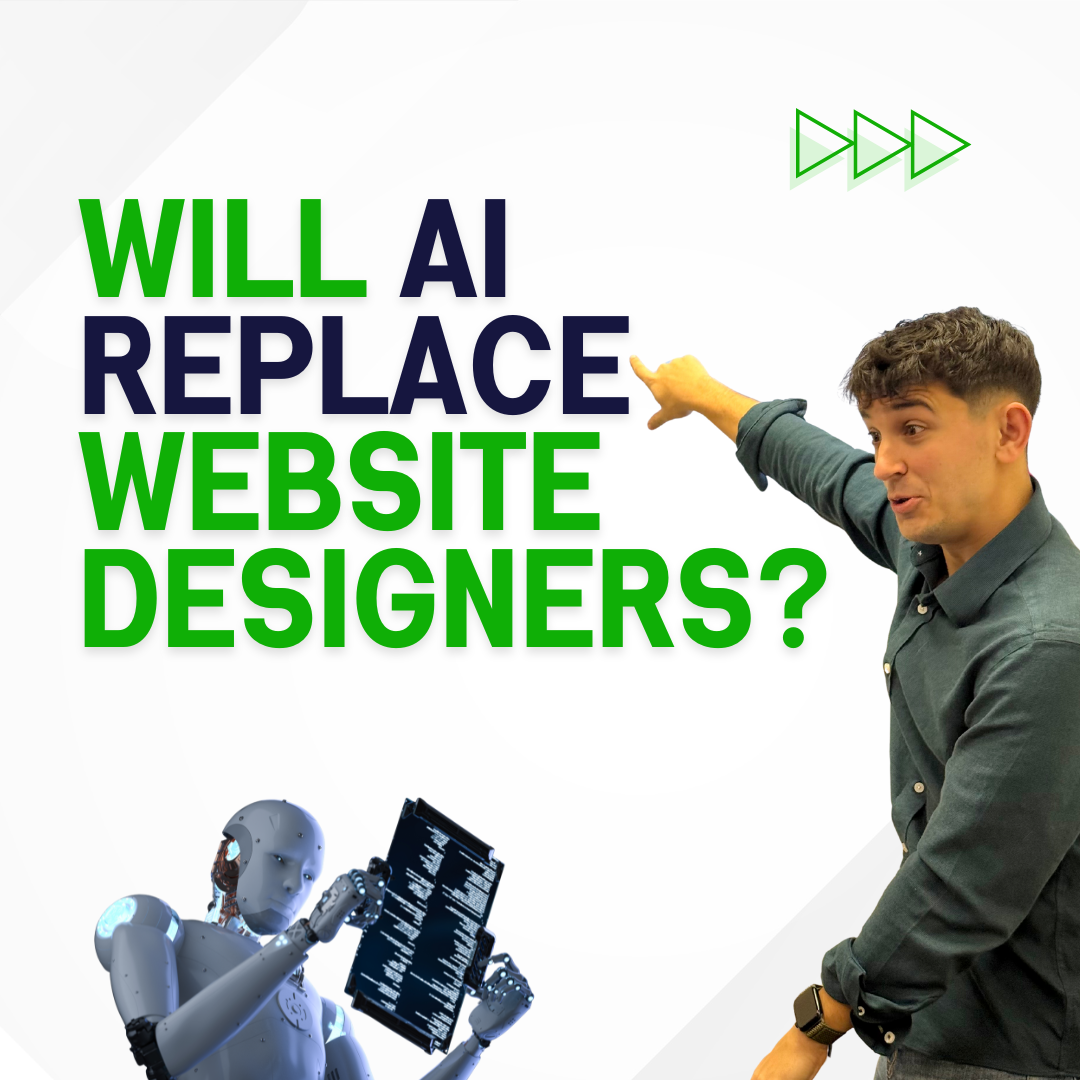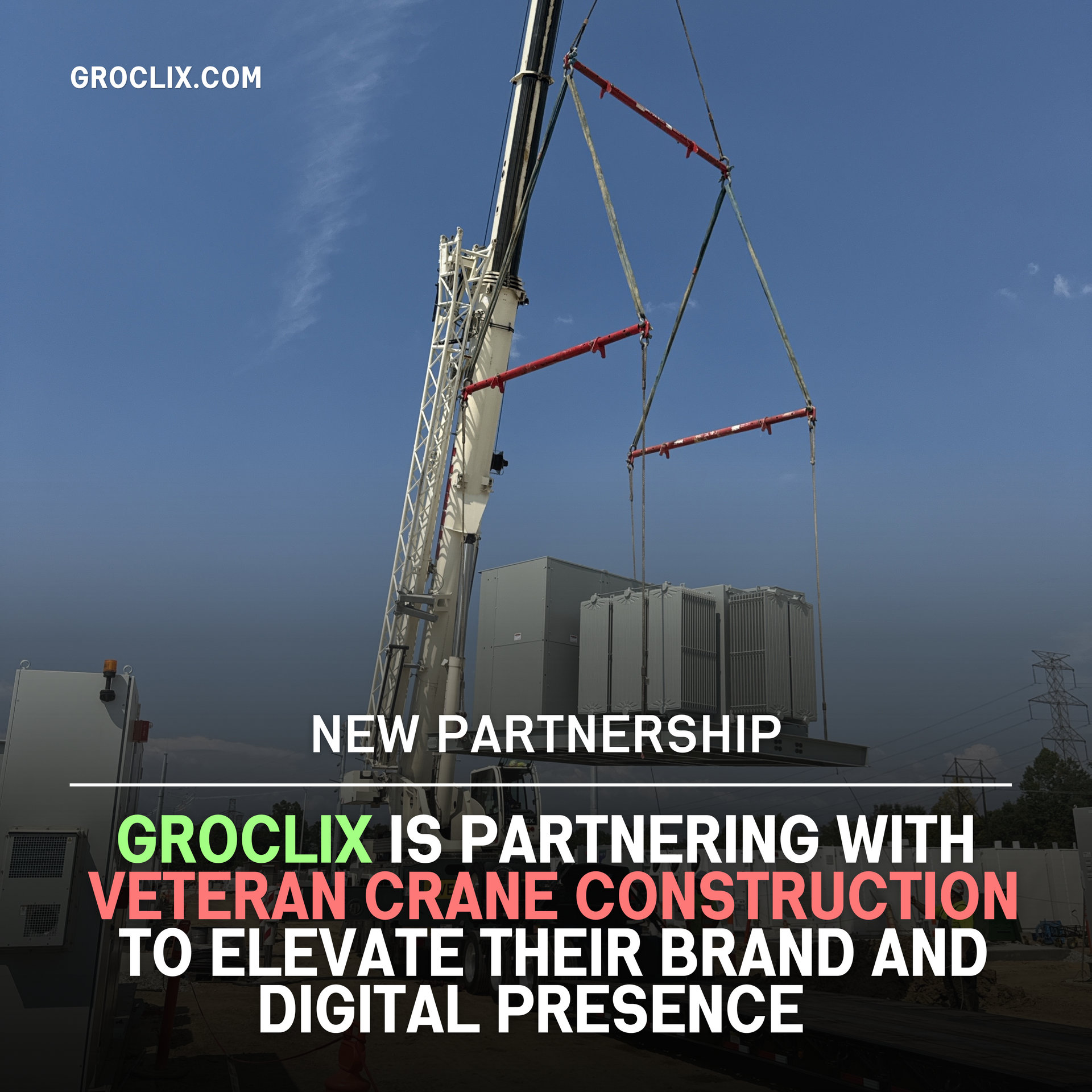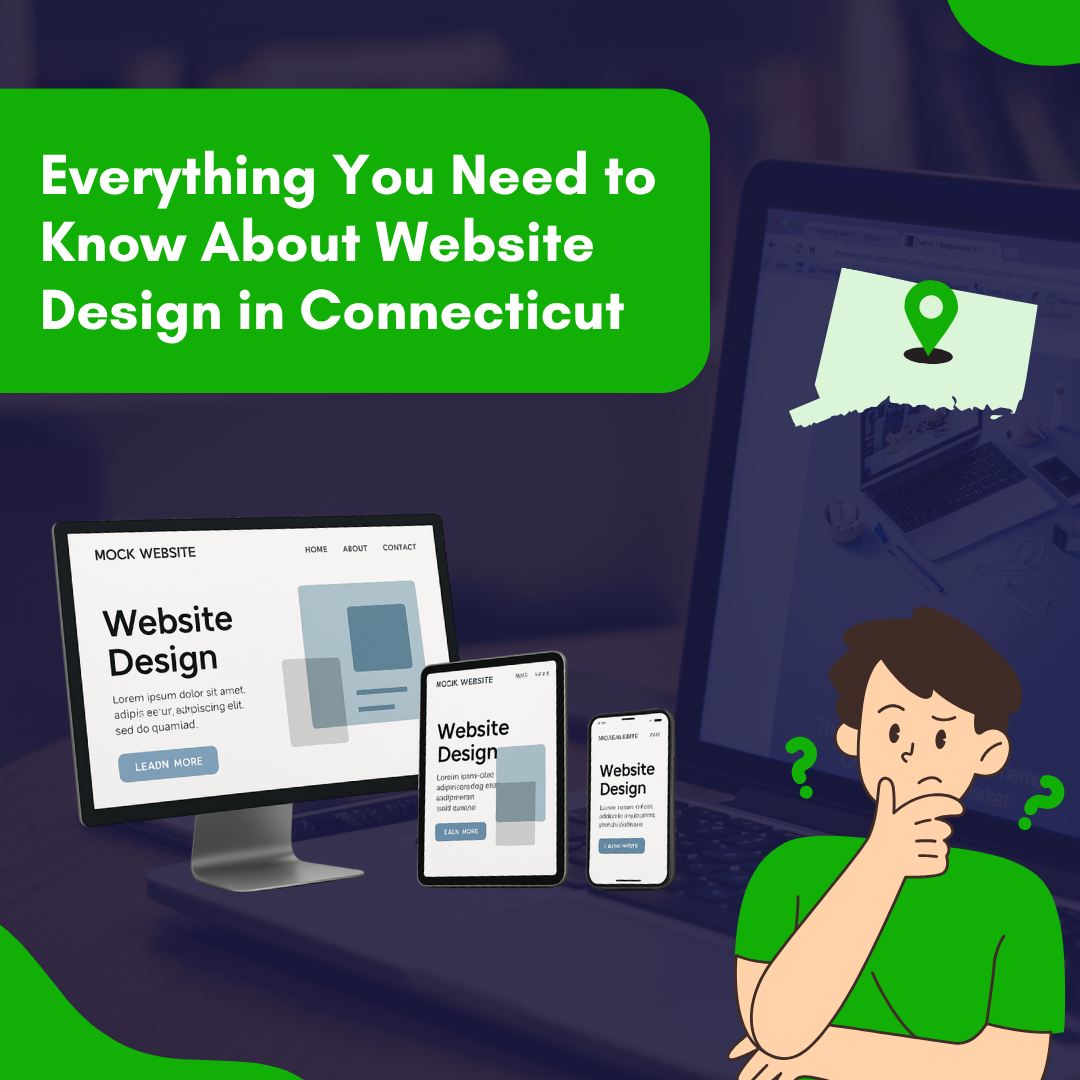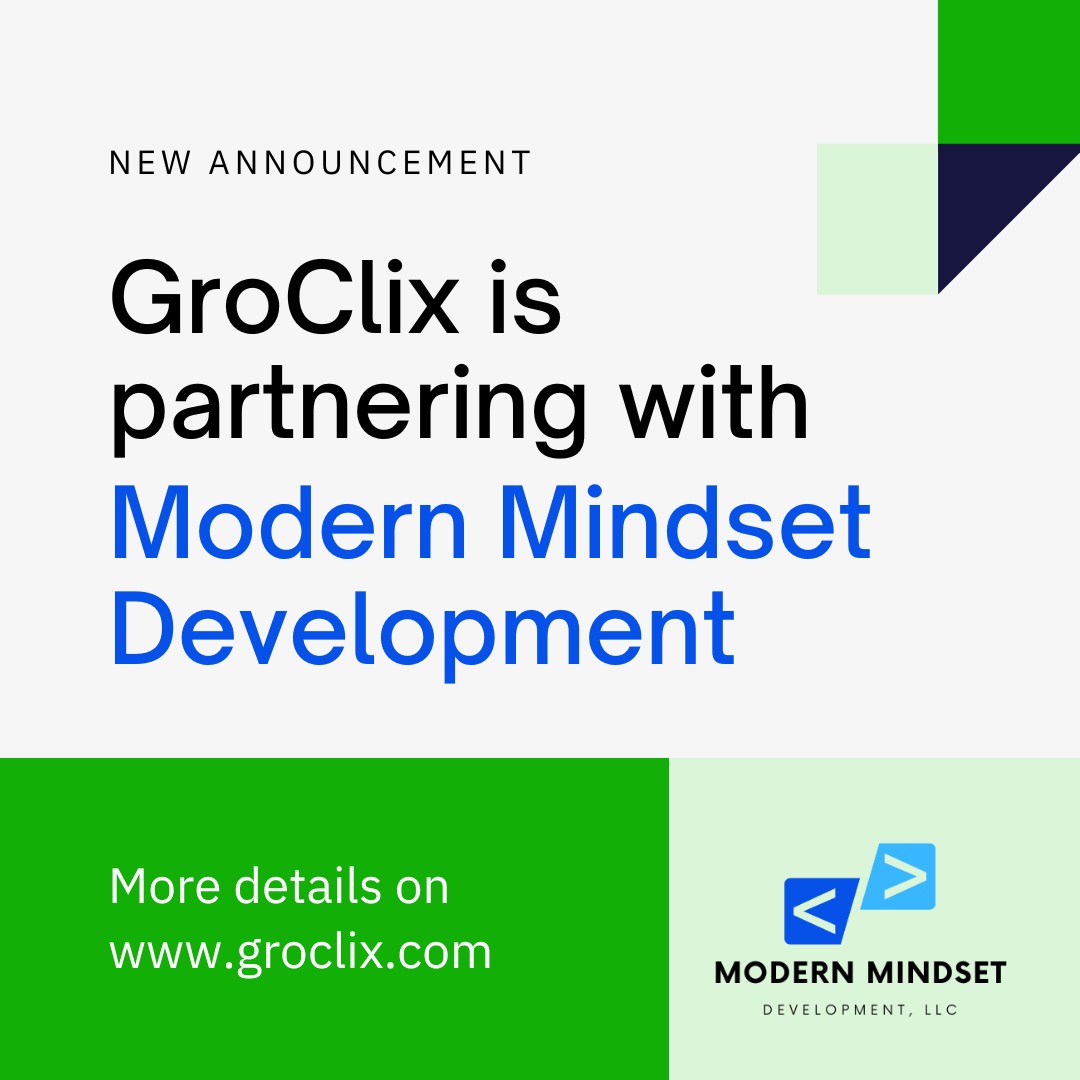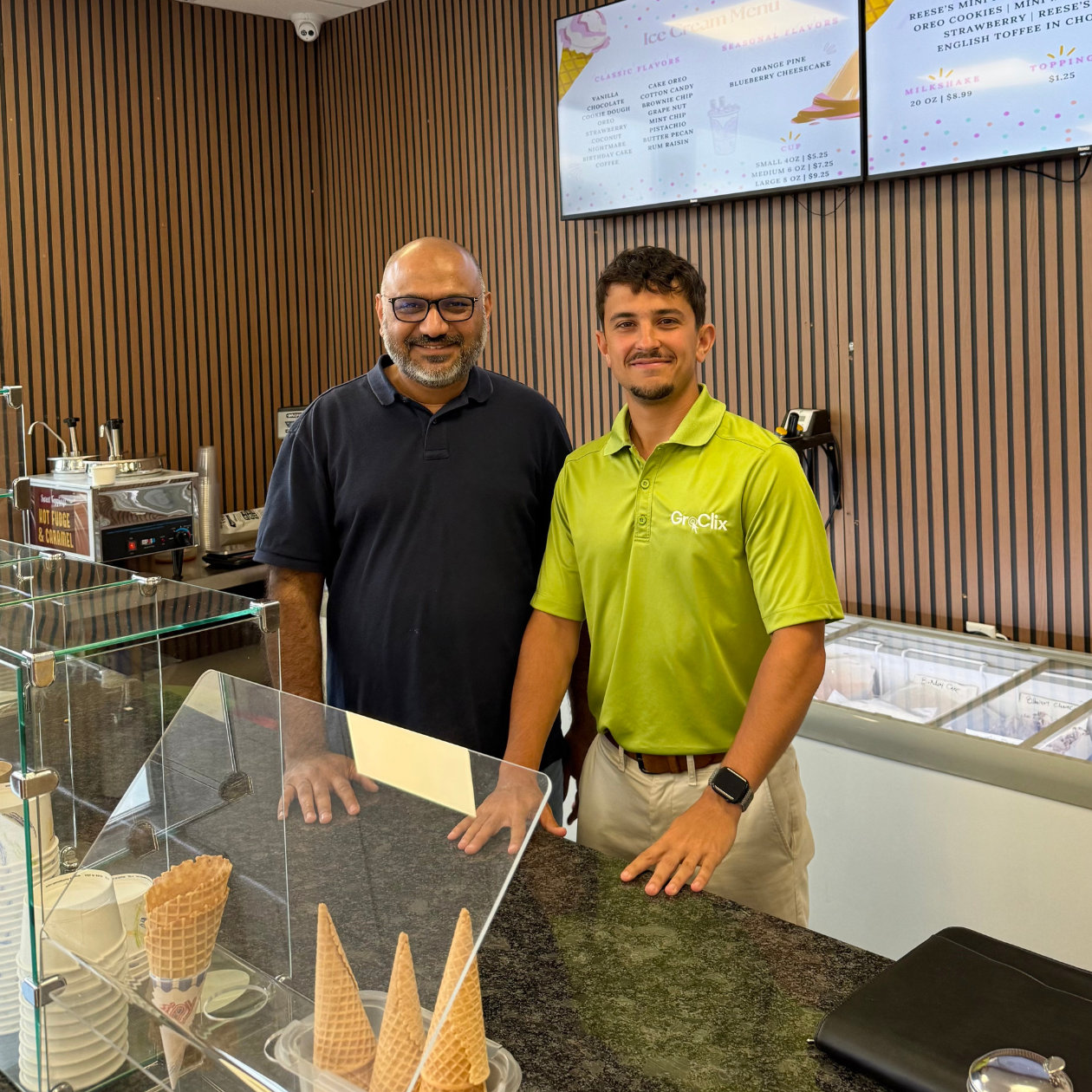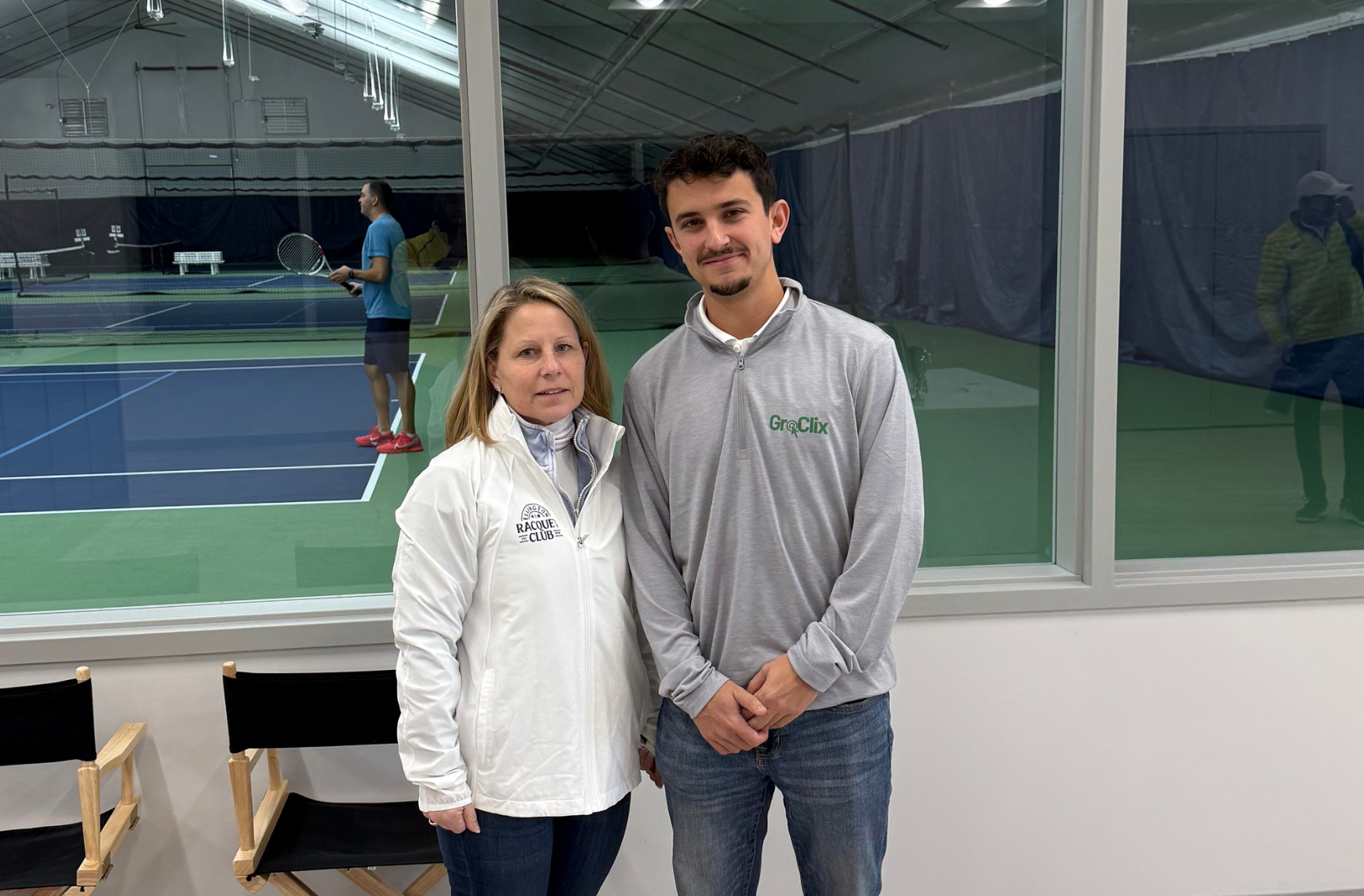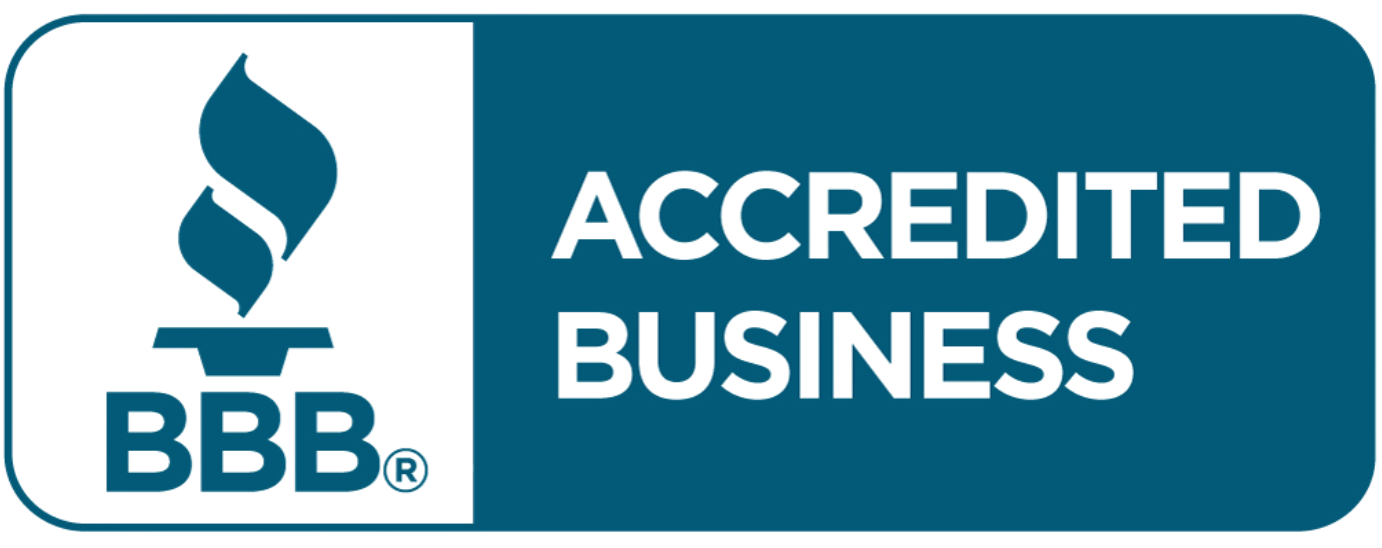Website Design in Connecticut: An Honest Guide to What Matters in 2025
You’re busy running a business, not decoding jargon - so here’s a straight, open guide from GroClix. We’ve split this into two parts to make it useful from the jump. Part 1 is an educational walkthrough of modern website design and digital marketing: whether you really need a site, what makes a good website, how SEO (and AEO) actually work, why quality photo/video elevates trust, which tactics fuel traffic, and how to balance short-term wins with long-term growth. Part 2 explains how GroClix, a Connecticut-based digital marketing and website partner, approaches projects: who we are, where we operate, our process, real examples, and how to reach out if you want to see whether we’re a fit. No gimmicks, no scare tactics, just a transparent look at website design in Connecticut and the digital marketing that helps it perform.

Do You Really Need a Website?
Short answer: if you want predictable leads and control over your brand, yes. Social media pages and a Google Business Profile are useful, but they’re rented land. A website is the only place you fully control the narrative, the design, the tracking, and the conversion paths. For Connecticut businesses—contractors, gyms, clinics, professional services, restaurants—your site is the hub that every other channel points to.
A website does three jobs better than anything else:
- Credibility & clarity.
People decide in seconds whether you’re legitimate. A clean, fast site with clear services, pricing cues, reviews, and ways to contact you signals “professional and trustworthy.” If you operate locally, your site also proves where you work (Ellington, Bloomfield, West Hartford, Hartford, etc.), which maps directly to how people search. - Findability beyond your followers.
Social posts reach people who already know you. Search reaches people looking right now for “best website design in Connecticut,” “roofer near me,” or “physical therapist West Hartford.” Without a site, you’re invisible to most of that intent. - Conversion and measurement.
Your website is where prospects book, call, request quotes, and join. It’s also where you can measure what works: which pages drive calls, which forms convert, which towns produce real inquiries. That data lets you spend money confidently.
“But I get all my business from word of mouth.” Great—your site multiplies that. Referrals still Google you. A strong site turns “my friend mentioned you” into “I’m ready to hire you.” Conversely, a weak or no website creates friction, doubts, and lost calls.
A quick diagnostic: if any of these are true, you need a site (or a better one).
- People ask the same basic questions before buying.
- You serve multiple towns in Connecticut and want to be discovered in each.
- You run promotions, seasonal services, or appointment-based work.
- You want to track which marketing dollars create actual customers.
- You plan to grow beyond one channel (social, ads, or referrals alone).
Bottom line: a website isn’t a vanity project—it’s an asset that compounds. It centralizes your brand, captures demand from search, and converts attention from every other channel into revenue. If you want reliability in your pipeline, you want a site that you own.
Do You Really Need a Good Website—and What Counts as “Good”?
Yes—and not because “good” wins design awards. A good website is one that quietly does its job every day: it brings the right people in, answers their questions, and gets them to take the next step. For a Connecticut business, that means a site that’s clear, fast, and easy to act on—whether someone’s in West Hartford on a phone or searching from Stamford on a laptop.
Here’s what “good” really looks like (in plain English):
1) Clear message, right away.
Above the fold, your site should say who you are, what you do, where you serve in CT, and the next step to take. If someone can’t answer those in 5–7 seconds, they bounce.
2) Built for action.
“Request a Quote,” “Book a Court,” “Call Now,” “Schedule a Consultation”—placed where decisions happen (hero, service sections, pricing, FAQs). Forms are short. Phone numbers tap-to-call. Calendars are simple.
3) Fast and seamless on mobile.
Most first visits are on a phone. Pages load quickly, images are compressed, layouts don’t shift around, and navigation is thumb-friendly. If it stutters, it costs you.
4) Structured to be found.
Pages are organized like a library, not a junk drawer: a focused homepage, dedicated service pages, and city pages for the towns you truly serve (e.g., Hartford, Bloomfield, Ellington, New Haven). Titles, headings, internal links, and schema are handled so search engines—and AI assistants—understand the site.
5) Content that answers real questions.
Plain-spoken copy that mirrors what customers ask on calls: pricing signals, timelines, what to expect, before/afters, reviews, and proof. No filler. If a salesperson says it every week, it probably belongs on the site.
6) Trust signals everywhere.
Local reviews, logos, licenses, photos of your actual team, CT addresses/areas served, insurance/bonding if relevant, and straightforward policies. Real > stock.
7) Accessible and readable.
Good contrast, legible type, alt text on images, keyboard-friendly forms. Accessibility isn’t just ethical—it expands your audience and avoids friction.
8) Measured and adaptable.
Analytics and call/form tracking are in place from day one. You can see which pages drive calls, which towns convert, and what people search before they contact you—then improve from there.
9) Safe and dependable.
SSL, backups, spam protection, and updates that don’t break your site. If the site goes down on a Saturday, you shouldn’t lose your weekend (or your leads).
Put simply: a “good website” is a reliable system, not a one-time design. It tells your story clearly, shows real proof, loads fast, works on any device, and gives people an obvious next step. Do you need that? If you want steady leads and a brand you’re proud to send people to—yes. And in a local market like Connecticut, where buyers comparison-shop quickly, the site that’s clearest and easiest often wins.
SEO, AEO, and More
Most people hear “SEO” and think keywords. Close, but incomplete. SEO (search engine optimization) is about making your website the best answer to a real search. That means clear structure, helpful content, fast performance, and proof you’re legit. AEO (answer engine optimization) is the same idea—just for AI-driven results and summaries (Google’s AI Overviews, Bing Copilot, Perplexity, ChatGPT, etc.) that try to answer questions directly. If SEO is about ranking pages, AEO is about earning inclusion in the answer.
Here’s how that plays out for a Connecticut business:
1) On-page foundations (humans first, bots second).
Every page needs a purpose: a specific question or intent it satisfies. Titles and headings should say it plainly (“Kitchen Remodeling in West Hartford,” not “We Transform Spaces”). Write the copy you’d say on the phone—pricing signals, timelines, process, service areas, FAQs. Add internal links that help people (and crawlers) move logically: homepage → service pages → related FAQs → contact. This is classic SEO and it also gives AI systems structured, scannable facts to quote.
2) Local signals (your CT footprint).
Local buyers and algorithms both want to know where you work. Keep your NAP (name, address, phone) consistent across your site and listings. Build city/area pages only for places you truly serve—Hartford, New Haven, Stamford, Norwalk, Ellington, Bloomfield—each with unique content (not copy-paste). Keep your Google Business Profile active with photos, posts, services, and fresh reviews. When AI pulls an “answer” for “best [service] near me,” those signals matter.
3) E-E-A-T without the buzzwords.
Show Experience, Expertise, Authoritativeness, and Trust by being specific and verifiable: before/after galleries with dates, named team members with credentials, real CT client quotes, case snapshots with outcomes (“cut waitlist by 28%”), and clear policies. Link out to any standards, permits, or associations you follow. AI systems love citing sources that look credible and human.
4) Technical health (quiet but vital).
Fast pages, compressed images, stable layouts, clean URLs, HTTPS, no broken links, and a simple navigation. Use schema (structured data) for things like Organization, LocalBusiness, Product/Service, FAQs, and Reviews—so both search engines and answer engines can “understand” and reuse your facts. None of this is flashy; all of it compounds.
5) Content that answers—not just attracts.
Move beyond fluffy blogs. Write the pages customers actually need: service explainers, pricing/estimates, “how long does it take,” “what’s included,” maintenance checklists, neighborhood/city guides relevant to your work. For AEO, add concise summaries and clean FAQs on page—these often get quoted in AI summaries because they’re short, direct, and structured.
6) Off-site proof (links and reviews the honest way).
Earn links by doing things worth talking about: local partnerships, sponsorships, events, data roundups, or helpful guides for your niche. Stack reviews on Google and relevant sites. Both links and reviews are still durable ranking and credibility signals—and they’re exactly what answer engines look for when deciding which sources to trust.
7) Measurement and iteration.
Set up Search Console, Google Analytics, and call/form tracking so you can see which pages drive real leads. Look at search queries from Connecticut towns; expand pages that are close to winning. If an FAQ keeps getting impressions but few clicks, tighten the answer and add a clear CTA.
What about timelines?
SEO/AEO are compounding plays. Technical and on-page improvements can move the needle in weeks; content and local signals typically build over 2–4 months; authority and city coverage scale over quarters. Ads and social can fill the gap short-term, but your search + answer visibility is the durable moat.
Common traps to avoid: thin city pages, generic blog posts that could fit any state, keyword stuffing, slow image-heavy pages, ignoring mobile usability, and farming reviews in bursts (steady wins). If it wouldn’t help a real customer in Hartford or New Haven, it probably won’t impress an algorithm either.
Bottom line: treat SEO and AEO as different doors to the same house. If your site is clear, fast, locally credible, and rich with straightforward answers, you’ll earn clicks from search results and citations from AI answers—bringing more of the right Connecticut visitors to your door.
High-Quality Photos & Video (and When Drone Footage Helps)
Great copy gets people interested; great visuals make them believe. For local Connecticut businesses, authentic, high-quality imagery is one of the fastest ways to raise trust, improve conversions, and lift performance across search, social, and ads. It’s also the difference between “looks generic” and “I can see myself hiring these people.”
Why it matters
- Trust at a glance. Real team, real space, real work. Prospects decide in seconds—polished, honest visuals reduce doubt and increase calls, bookings, and form fills.
- Search visibility boost. Strong photos help your Google Business Profile stand out; videos increase on-page time and engagement (good behavioral signals).
- Everywhere utility. One shoot fuels your website, GBP, social, ads, email, and proposals. The ROI compounds.
What to capture (keep it human)
- People & place: team portraits (candid + posed), front-of-house/office, shop/facility, trucks/signage, customer interactions. Show Connecticut context where it’s natural (streetscapes, seasons, towns).
- Process & proof: before/after series, mid-project details, equipment in use, deliverables, results.
- Service stories: 3–6 key moments that define what you do (e.g., intake → work → QA → handoff).
- Micro-content for social: 10–20 short vertical clips (10–20s each): tips, walkthroughs, FAQs, reveals, testimonials.
Drone—when to use it (and when not)
- Great for: roofers/contractors, landscaping, large facilities, venues, campuses, event recaps—anything where scale or layout matters.
- Skip it if: it adds spectacle without substance. Drone should clarify context (site overview, access, coverage), not just look cool.
- Practical note: follow FAA rules, local restrictions, and safety protocols; use licensed operators for commercial work.
Quality without slowing the site
- Shoot right, compress right. Capture high-res, then export web-ready (proper dimensions) and compress before uploading.
- Responsive images. Serve different sizes to mobile vs desktop; lazy-load below-the-fold media.
- Thoughtful thumbnails. Choose frames that tell the story instantly; avoid massive hero videos that tank load speed.
How visuals support conversion
- Pair every major section with proof. Service block → relevant photo/video → clear CTA.
- Faces + CT cues = trust. A smiling tech on-site in West Hartford says more than stock ever will.
- Explainer clips reduce friction. A 45-second “what to expect” video can cut call uncertainty and lift form completion.
Editing & consistency
- Color and light. Natural light > heavy filters. Keep a consistent look (white balance, contrast) across the site.
- Cropping and focus. Frame for mobile first; keep key subjects centered/safe for vertical crops.
- Brand elements. Subtle logo hits (shirts, vans, interior signage) build recall without shouting.
Search & accessibility basics
- Descriptive file names & alt text. “elllington-ct-roof-replacement-before.jpg” beats “IMG_3249.jpg.” Alt text should describe the scene, not stuff keywords.
- EXIF/location (optional). Location metadata can be useful for your archives; strip if privacy is a concern.
- Captions & transcripts. Add concise captions; include transcripts for key videos.
Shot list to hand your photographer (CT version)
- Exterior wide + signage (daylight + dusk)
- Team group + individual portraits (indoors and on-site)
- 1–2 customer journey sequences (step-by-step)
- 3 before/after sets (same angle)
- Detail macros (tools, hands, materials)
- Vehicle fleet / mobile setup (with CT landmarks if natural)
- Short vertical clips: intro, process, FAQ, testimonial, final reveal
- Optional drone: site overview, approach/parking, roof/grounds, facility scale
Make the assets work
- Upload the best 15–25 images to the website (web-optimized), then drip additional photos to GBP weekly.
- Build a lightweight brand folder: hero images, headshots, logo pack, b-roll clips, and social-ready cuts.
- Reuse clips in ads and email; embed 1–2 priority videos on pages where decisions happen (service pages, pricing, contact).
Bottom line: your visuals should feel local, specific, and real. If a stranger in Hartford or New Haven can look at your site and instantly understand who you are, what you do, and the quality you deliver, the photos and videos are doing their job—and the rest of your marketing works better because of them.
Other Digital Marketing Tactics That Fuel Growth
Your website is the hub. These channels are the spokes that drive the right people to it—and give them enough confidence to take action. You don’t need all of them at once; you need the right mix for your goals, seasonality, and budget.
Google Business Profile (GBP) — your low-lift workhorse
Post weekly, add fresh photos, list real services, answer Q&A, and respond to every review. For Connecticut searches like “near me,” GBP is often the first impression. Treat it like a mini-site that constantly points back to key pages on your site (services, booking, contact).
Local SEO & city pages
If you truly serve Hartford, West Hartford, Ellington, Bloomfield, or New Haven, build dedicated pages that prove it with specifics: neighborhoods, timelines, before/after examples, testimonials, and CT-relevant FAQs. Link them together thoughtfully and back to your core service pages.
Content that answers buying questions
Skip fluffy blogs. Publish practical pieces that shorten the path to “yes”: pricing/estimates, timelines, “what to expect,” checklists, maintenance guides, buyer’s guides, and case snapshots. Each article should have a clear CTA and internal links to services and contact.
Reviews & testimonials (social proof that compounds)
Make it a habit: trigger a review request after a successful job or visit. Highlight reviews on your site and GBP. A single detailed Connecticut review (with town and service specifics) can outperform 10 generic ones.
Email & simple automations
A basic monthly newsletter with one useful tip + one clear CTA goes a long way. Add a short 3–5 email nurture sequence for new inquiries: intro, social proof, pricing/next steps, FAQs, and a direct “book now.” Connect forms to CRM so nothing slips.
Paid search (Google Ads) for high-intent terms
Use ads to cover gaps while SEO builds. Aim at money terms (“emergency [service] Hartford,” “[service] near me”) and send to tight landing pages, not your homepage. Track calls and forms. Start small, prune keywords weekly, and scale only what converts.
Paid social (Meta/TikTok/LinkedIn) for awareness and retargeting
Short native videos work best: 15–30 seconds showing the outcome, the process, or a quick tip. Pair this with retargeting ads that bring site visitors back with an offer or clear next step. Keep the click-through to a focused landing page with one CTA.
Partnerships & local features
Team up with complementary CT businesses (gyms ↔ therapists, contractors ↔ realtors). Swap backlinks, co-host events, bundle offers, and share client education pieces. Local PR (town papers, business groups, chambers) still drives quality traffic—and links.
Events & offline → online
Workshops, pop-ups, open houses, clinics—great for content and leads. Always create a simple event landing page, capture signups, and follow up by email. Use QR codes on signage and receipts that go straight to your primary CTA.
Conversion rate optimization (CRO) basics
Small wins add up: clearer headlines, fewer form fields, trust badges near CTAs, tap-to-call buttons on mobile, live chat or a callback widget, and fast-loading pages. Revisit the top 5 pages monthly and make one improvement at a time.
Analytics & call tracking
Set up Google Analytics, Search Console, and call tracking with source attribution. Measure what matters: calls, form fills, booked meetings, and revenue. Review monthly by channel so you can double down on winners and trim the rest.
Who is GroClix?
GroClix is a small, hands-on web design and marketing partner based in Connecticut. We build clean, fast, SEO-ready websites and then help them earn traffic with practical marketing—no gimmicks, no cookie-cutter playbooks. We work like an embedded team: we learn your business, measure results, and make steady improvements so your site keeps performing.
Where is GroClix located—and are we a big company?
We’re local to Connecticut (office in Bloomfield). We’re intentionally not a big agency. That’s the point. You get direct access to the people doing the work, faster iterations, and plain-English communication. When you email or book a call, you’re talking to the folks actually designing, writing, and shipping your site—not a voicemail tree. We serve clients across Connecticut, and various states around the country.
Who Has GroClix helped?
We’ve supported a mix of Connecticut and regional businesses—service, professional, and community-focused. A few snapshots:
- Ellington Racquet Club
(Ellington, CT)
Redesigned site and ongoing marketing. Within the first month after launch, social reach and engagement climbed significantly and membership interest grew alongside a cleaner booking path and clearer CTAs. The site now reflects real-world programs (tennis, pickleball) and funnels visitors to the right actions. Ellington Racquet Club went from zero organic visitors to over 600 every month and ranked first in the industry.
- Cedar Knob Restaurant and Banquets (Somers, CT) - Site build and ongoing seasonal updates (menus, events, SEO). We structured pages around real booking actions—banquet inquiries, specials, and seasonal messaging—so the site stays useful during peak months and visible during slower ones.
- Modern Mindset Development (Simsbury, CT) - Website + positioning for a custom software company serving field-service and construction clients. Clear messaging around process, integrations, and outcomes.
- Trailhead Printing (Simsbury, CT) - Web + marketing support and a shared services model (design + print) so local businesses can move from idea to finished asset fast. Also helping Trailhead with seasonal advertising campaigns and overall marketing strategy.
- Spectrum Insurance (Bloomfield, CT) - Site refresh and content focused on CT insurance questions people actually ask; simpler paths to quote or conversation. Also prioritizing optimizing their CRM, EZLynx, in order to craft more efficient email campaigns and customer retention strategies.
- Bloomfield BreakPoint (Bloomfield, CT) - Local brand revamp and website showing their ice cream, café, and hot-dog concept; paired with steady social content and community tie-ins.
- Keynote Financial Services LLC (Vernon, CT) - Professional services site refresh focused on clarity, trust, and conversion. Simplified service pages, added strong FAQs, and tightened CTAs to make it easier for prospects to book a consultation and understand next steps.
Different industries, same core principles:
clarity, speed, proof, and an obvious next step.
How to reach out (and how we decide if we’re a fit)
If your goal is a site that quietly does its job—brings in the right people, answers their questions, and drives action—we’ll likely get along well. If you’re looking for quick tricks or shiny dashboards instead of outcomes, we’re probably not the match.
Ways to start:
- Start a conversation: use the contact form on our site with a couple of sentences about your business and goals.
- Email: hello@groclix.com with your current site URL (if you have one), your top 2–3 services, and the area you serve.
First step is a 15–20 minute call. If we’re confident we can help, we’ll outline a simple plan (pages, features, timeline, and ballpark budget). If we’re not the right partner, we’ll tell you—and point you in a useful direction.
Bottom line: we’re a small Connecticut team that builds websites you can trust and marketing you can understand. If that’s what you want, let’s talk.
